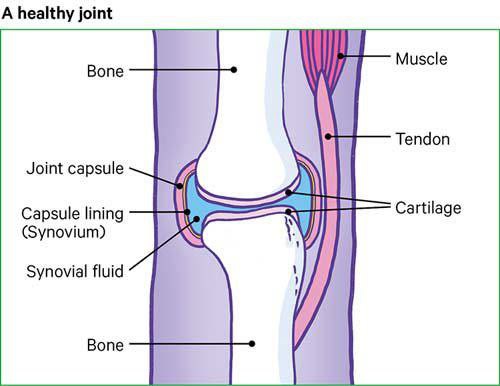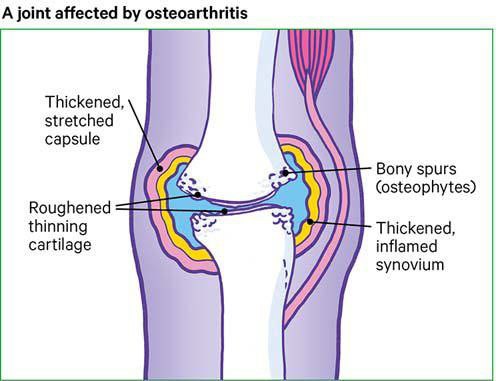Knee Pain – Arthritis
MAITREEYOG > Knee Pain – Arthritis
A joint is where two or more bones meet, such as in the fingers, knees, and shoulders. Joints hold bones in place and allow them to move freely within limits.
Most of the joints in our body are surrounded by a strong capsule. The capsule is filled with a thick fluid that helps to lubricate the joint. These capsules hold our bones in place. They do this with the help of ligaments. These are a bit like very strong elastic bands.
The ends of the bones within a joint are lined with cartilage. This is a smooth but tough layer of tissue that allows bones to glide over one another as you move.
If we want to move a bone, our brain gives a signal to the muscle, which then pulls a tendon, and this is attached to the bone. Muscles therefore have an important role in supporting a joint.
The word arthritis is used to describe pain, swelling and stiffness in a joint or joints. Arthritis isn’t a single condition and there are several different types. Because there are several types of arthritis, it’s important to know which one you have. There are some similarities between these conditions, but there are also some key differences. The most common type of arthritis is Osteoarthritis.
Osteoarthritis starts with the roughening of cartilage. If this happens, the body can put in place a ‘repair’ process to try to make up for the loss of this important substance. The following can then happen:
Tiny bits of extra bone, called osteophytes, can grow at the ends of a bone within a joint.
There can be an increase in the amount of thick fluid inside the joint.
The joint capsule can stretch, and the joint may lose its shape.
Rheumatoid Arthritis is a type of inflammatory arthritis. It is what is known as an auto-immune condition.
The immune system is the body’s natural self-defence system, and it protects us from infections and illness. When someone has an auto-immune condition, the body’s immune system mistakenly attacks the body’s healthy tissues, such as the joints, causing inflammation.
Inflammation is normally an important tool in the immune system. It occurs when the body sends extra blood and fluid to an area to fight an infection. This is what is happening for example if you have a cut that gets infected, and the skin around it becomes swollen and a different colour.
However, in rheumatoid arthritis the inflammation and extra fluid in a joint can cause the following problems:
It can make moving the joint difficult and painful.
Chemicals in the fluid can damage the bone and joint.
The extra fluid can stretch the joint capsule. Whenever a joint capsule is stretched, it never quite returns to its original position.
Chemicals in the fluid can irritate nerve endings, which can be painful.



